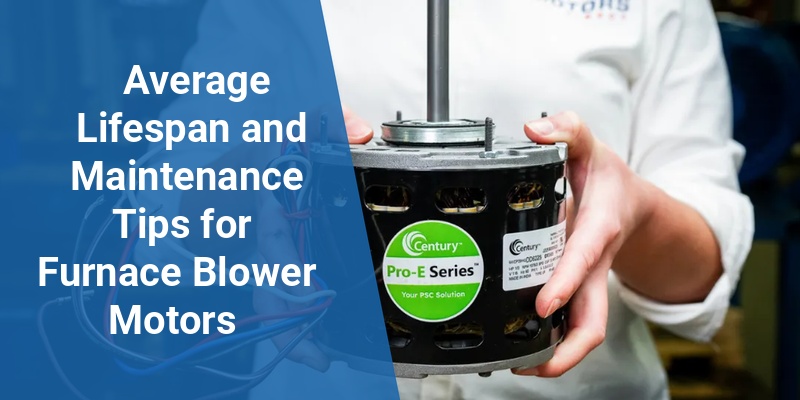The furnace blower motor is a critical component in heating systems, responsible for circulating warm air throughout a home. Knowing the average life of a furnace blower motor helps homeowners plan for maintenance, avoid breakdowns, and ensure efficient heating. Typically, a furnace blower motor lasts between 10 to 20 years, depending on usage, model quality, and maintenance. Understanding the factors that affect its lifespan and how to maintain it properly can extend its operational life significantly.
| Factor | Impact on Motor Lifespan |
|---|---|
| Quality of Motor | Higher-quality motors can last up to 20 years or more. |
| Usage Frequency | Frequent use may shorten lifespan due to wear and tear. |
| Maintenance | Regular cleaning and lubrication extend motor life. |
| Installation Environment | Exposure to dust, moisture, and heat may reduce lifespan. |
| Electrical Supply | Stable, correct voltage ensures optimal motor performance. |
How Long Does a Furnace Blower Motor Typically Last?
The average life expectancy of furnace blower motors ranges between 10 and 20 years. This timeline depends heavily on the motor’s configuration—whether it’s a permanent split capacitor motor, shaded pole motor, or electronically commutated motor (ECM). Higher-end models, like ECMs, are designed to be more efficient and durable, often lasting longer than standard motors.
Usage cycles and operating conditions, such as continuous operation during colder months, can influence how quickly a motor wears out. Well-maintained motors in homes with moderate heating demand often approach the upper range of lifespan.
Key Factors Influencing Furnace Blower Motor Lifespan
Motor Quality and Design
Investing in a furnace blower motor from a reputable manufacturer with robust design features can significantly enhance longevity. Motors built with better materials and thermal protections are less susceptible to overheating and mechanical wear.
Frequency and Duration of Use
Homes in colder climates or using continuous fan operation place more strain on blower motors. Such frequent operation increases wear on bearings, windings, and the motor shaft, potentially shortening lifespan.
Regular Maintenance Practices
Proper maintenance, including lubrication of motor bearings, cleaning dust buildup, and ensuring filter replacement, supports motor efficiency and reduces premature failure risks. Ignoring maintenance can lead to overheating and component wear.
Environmental Factors and Installation Setting
Motors in environments with high humidity, dust, or poor airflow may experience corrosion or clogging, which degrade components over time. Proper installation with sufficient clearance and ventilation is critical.
Call 888-906-9139 for Free Local HVAC Quotes – No Obligation, Just Savings!
Electrical Stability and Voltage Quality
Fluctuations in electrical supply can strain the motor’s windings and controls. Using a voltage stabilizer or surge protector helps maintain consistent power delivery and protects the motor’s internal parts.
Signs of a Failing Furnace Blower Motor
Recognizing early symptoms of blower motor failure helps in timely repair and replacement, preventing complete furnace shutdown:
- Buzzing or humming noises without fan movement indicate stuck motor components.
- Intermittent operation where the blower starts and stops unpredictably.
- Overheating or burning smell signaling worn bearings or insulation deterioration.
- Reduced airflow or unusual vibrations caused by motor imbalance or worn belts.
Maintenance Tips to Prolong Furnace Blower Motor Life
Routine Inspection and Cleaning
Regularly remove dust and debris from the motor housing and fan blades. Dust buildup restricts airflow and increases motor temperature, which accelerates wear.
Lubricate Bearings When Applicable
Some motors feature sealed bearings that do not require lubrication, but many older models need periodic oiling. Always check the manufacturer’s recommendations before applying lubricant.
Replace Air Filters Frequently
Dirty filters force the motor to work harder, raising energy consumption and mechanical strain. Replacing filters every 1–3 months depending on usage can help maintain optimal motor health.
Verify Electrical Connections
Loose or corroded electrical connections can cause voltage drops or intermittent power supply, negatively impacting motor performance. Inspections during annual furnace service are essential.
Choosing a Replacement Furnace Blower Motor
When a furnace blower motor reaches the end of its life, selecting the right replacement is crucial for efficiency and longevity. Consider these factors when purchasing:
Call 888-906-9139 for Free Local HVAC Quotes – No Obligation, Just Savings!
- Compatibility with existing furnace model and electrical specifications.
- Energy efficiency, such as ECM motors which consume less power.
- Warranty coverage and manufacturer reputation for reliability.
- Installation service by certified HVAC professionals to ensure proper setup.
Cost Considerations and Average Replacement Expenses
The cost to replace a furnace blower motor varies based on motor type and labor rates. On average, homeowners can expect to pay between $300 to $700 including parts and professional installation. Higher-efficiency motors or complex furnace models may increase the price.
Investing in routine maintenance can reduce the frequency of replacements and overall expense, making it a cost-effective strategy long term.
